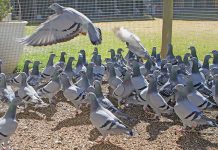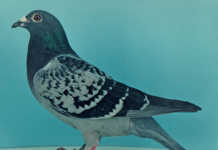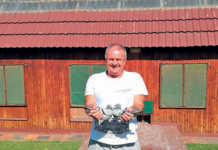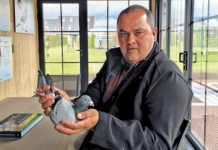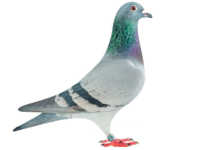With the 2009 Racing pigeon season over, fanciers have a chance to review their performance. This time should be seen as a chance to analyse mistakes and work towards taking past achievements to greater heights. We need to set realistic goals that we can afford.Successful pigeon racing demands, not only a love for the birds and a passion for the sport but a huge amount of free time, a reasonable financial budget, a house with a fairly large back garden space, and an understanding family who are prepared to share the chores.
You need to be dedicated, but remember that the family comes first. Often, a fancier may need to wait until retirement.You need to decide first what you want to gain from your hobby. If you are racing pigeons just for fun, enjoy it, but remember that it’s going to be tough if you are timing in your pigeons half-an-hour late against your club mates week after week.
Competition strength has doubled
Despite the fact that the South African membership tally has dropped more than 50% compared to 20 years ago, the competition strength has doubled.Besides prestige, the high cash rewards are often the incentive. Professional businesspeople who have joined the sport are the most ambitious. To compete competitively without the help of family members or a loft manager, you need to invest between one and two hours into your hobby each day in the racing season.
The pigeons should be released from the loft to fly in a kit around the home area once or twice a day for 30 to 60 minutes’ home exercise per session. After training, the pack needs to be called inside the loft, watered and fed, then checked for possible injuries or signs of disease. Handling each pigeon physically helps tame the birds and creates a bond that stimulates the will to win. One needs a safe and happy pigeon loft environment.
Road training can be done by taking turns with a few buddies or using the services of a training truck. It is far cheaper on fuel to use a shared truck pool for training.Thanks to modern technology, we have state-of-the-art electronic clocking systems. Electronic rings on the legs of pigeons enable us to capture data. Hi-tech computers and scanners “read” and transmit health conditions. We also have tracking devices, and home computers can print sophisticated pedigrees and recommended matings. Medication, too, has advanced. Pre- and probiotics formulated for racing pigeons are available.
Recommended year-end review
Make it a priority to keep fewer but better pigeons. Prevent overcrowding that promotes disease and ensure effective loft ventilation. Take pigeon hygiene seriously and use natural products if possible. Breed at least six to eight youngsters from a new pair to assess breeding potential.


